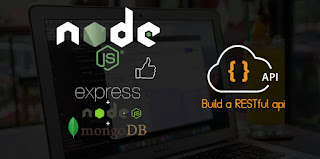 |
| Node.Js Developers |
Still frameworks could be used for building a RESTful api which are all discussed below in more detailed way.
The most light-weighted and effective framework is Restify. It doesn’t needs to force a programmer to use external modules or libraries. Apart from that it functions with minimum features. This was the basic framework available in Node.js for RESTful api.
Now let’s compare both, Restify and Express, so that we could get an overall view of these framework which could me more suitable.
Other than this, there are more frameworks which could be used for it. But the basic element to be kept in mind is that the framework should satisfactory and work efficiently according to the requirement.
Another framework which is worth to be discussed is Express.js. It’s also the basic Node.js API. It contains more functionality, including especially templating and rendering and every module needed could be easily added.
Normally, Restify is considered as a framework which provides absolute control over interaction with HTTP and complete ability to observe into the latency and characteristics of your applications. On the other hand, Express.js is opposed to Restify. It can become overwhelming with time (all end points need to be created manually). We should rather list some pros and cons of these frameworks.
Express.js is most popular among the other frameworks because of its simplicity and the liberty to satisfy all the benefits of any other frameworks.
Another advantage of using it is that it could become possible to find many online tutorials other than support from the community, in case problem occurs. This is the reason for sticking to the most popular frameworks.
Next framework which you can use is Sails.js. It is commonly known and appreciated for its
flexibility and its speed which it allows building an app skeleton. It can do wonders for Node.js developers. Apart from this, it also include some other features such as, blueprints, policies, Waterline (ORM). Yet is carries from certain drawbacks which are noticeable. Since it is new, it hasn’t yet been tasted on properly.
Now let’s discuss about another framework, i.e. Hapi. It seems to provide a complete set utilities for deploying APIs and seemed to be quite promising. There are valid reasons to stick with Hapi as it builds API but not web app. There is Hapi module present for any major challenges of API building and at the same time it will also help you saving lots of time.
You should stick with Hapi because of the following reasons stated below.
1. Developed by WalmartLabs, Hapi is well and nicely maintained. They update it pretty frequently fixes lots of issues reported.
2. It has very well developed video tutorials available on YouTube.
3. It embraces configuration cover code and containing the authentication schemes and strategies which makes it easy to plug different auth methods to separate routes.
4. It’s created for rich and robust node plugins for authentications, error handling, validation and other tasks which makes it easy to integrate. It seemed like these plugins have been developed alongside the framework development.
5. Loopback is full of opinions. It is created for faster initial developments than any other things to attain. It’s really very promising in nature.
6. Hapi has many achievements in automating basic REST API needs yet giving all the flexibilities you need. Initially you can use their own Node modules available and in future it can be easily be replaced with your own if you want. It is fine tuned for creating RESTful APIs.
Among the above discussed frameworks, you should be concerned about its pros and cons and then select the one to be used for after combining it with another frameworks.















No comments:
Post a Comment
Note: Only a member of this blog may post a comment.